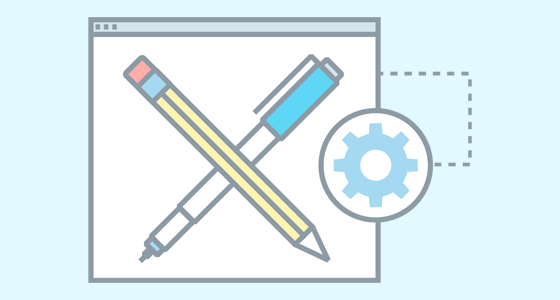B2B website design used to be very cold, boring and calculated. Less emphasis was placed on the design, and more of the emphasis was placed on basic structure. B2B web design for small businesses was even more basic, focused on just the core functionality required to capture sales.
Design has been evolving along with functionality. B2B website design best practices have been evolving in lockstep with the functionality of a B2B Ecommerce solution, ensuring that the design serves its purpose within the overall goals of an online solution.
Here are five ways you can leverage modern Ecommerce web design practices to implement best-in-breed experiences for your online customers.
1. B2C Customers Browse; B2B Customers Buy
The first bullet is a critical principle to remember when it comes to the differences between a B2C store and a B2B one. B2C stores are about discovery, encouraging deeper dives into the catalog, whereas B2B order portals are about making it easy to build and purchase a complex or large cart of items.
This means part of the design and implementation of a B2B design should consider aspects not as common to B2C stores such as:
- Adding multiple items to the cart at one time
- A table view showing items in more of a catalog format, with a focus on the data first and imagery second
- Additional functionality like Quick Order forms for easy SKU/quantity inputting for adding a lot of items quickly into the cart.
2. In B2B Website Design, Functionality Takes Precedence
A fancy site may look nice, but if you’re making it difficult to build and execute an order, it’s useless. Modern B2B solutions come with the functionality built in, but differ on how design is managed.
The most advanced, such as Zoey, offer ways to manage design without losing functionality. In the case of Zoey, a Visual Design Editor is offered so you can mix and match design elements and functional components, managing things like brand fonts and colors while not needing to worry functionally that things will be challenging for their buyers.
For business owners, the ultimate outcome is a less complicated site build and management. As Zoey founder Uri Foox said in an article in Inc.:
The less you rely on coding to create a beautiful site, the less complicated it will be. Uri Foox, president of the e-commerce website design platform Zoey, says that despite SaaS platforms’ ability to remove much of the complexity associated with running an online store or website, code is still needed to customize the front-end design of a site, for almost all platforms.
3. Make Self-Service Ecommerce Easier
So if functionality is most critical, design should be about enabling and facilitating those sales. Most important to that is making the self-service Ecommerce experience as accessible as possible.
Foox noted that this move for B2B businesses is something that was expected, given the popularity of B2C Ecommerce:
He says, “The next big wave of growth for e-commerce is in the B2B market, and in order to take advantage of it, B2B brands are trying to create websites that let their customers buy much like they would from a B2C site, such as Amazon or Zappos.”
The key, of course, is to offer a solution that makes sense for B2B buyers.
4. Designing for a Public, or Private, Audience
B2B businesses have two ways they can use their buying experience. They can implement a private online shopping experience, which is usually stripped back of bells and whistles, or they can use it as part of a public website, which tends to be more robust and fully designed.
There are pros and cons to each – businesses that don’t have the bandwidth or team to manage a full Ecommerce website experience may find an order portal less intimidating to maintain. Larger businesses may find using their Ecommerce store as a search engine optimization opportunity by having more listed in Google and other engines as a positive and worth the extra investment.
Knowing your audience, and who you’re using your Ecommerce store for, will determine what sort of investment and upkeep you need to make to be successful. Solutions like Zoey can assist you in running either model for maintaining a presence and capturing sales.
5. Website Personalization
Although it doesn’t sound design-centric, making sure you have a focus on website personalization when putting together a site can be a critical way of ensuring success with a B2B site.
On the surface this may be simple things like saying “Hello, X” when a user is signed in, but in reality with B2B this includes more complex, but mission critical, components such as showing customer-specific pricing and previous order history.
Such aspects are important for self-service B2B Ecommerce to be possible, and for your buyers to have sufficient faith in placing orders without a salesperson.
Zoey is Built for Modern B2B Web Design
With our Visual Design Editor and a complete suite of features, you can be sure that you can build an online presence that can serve your buyers. Contact us to learn how we can get your business up and running today:





